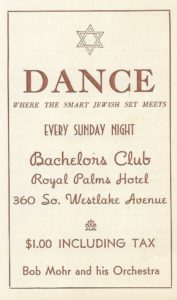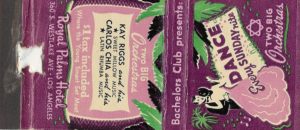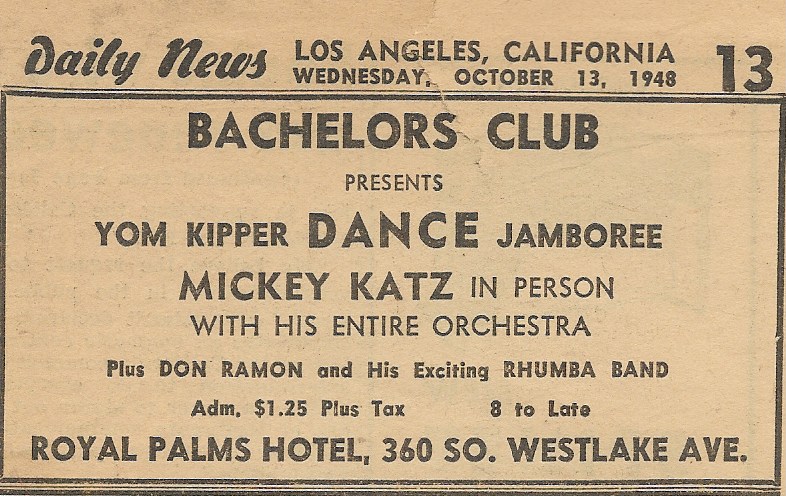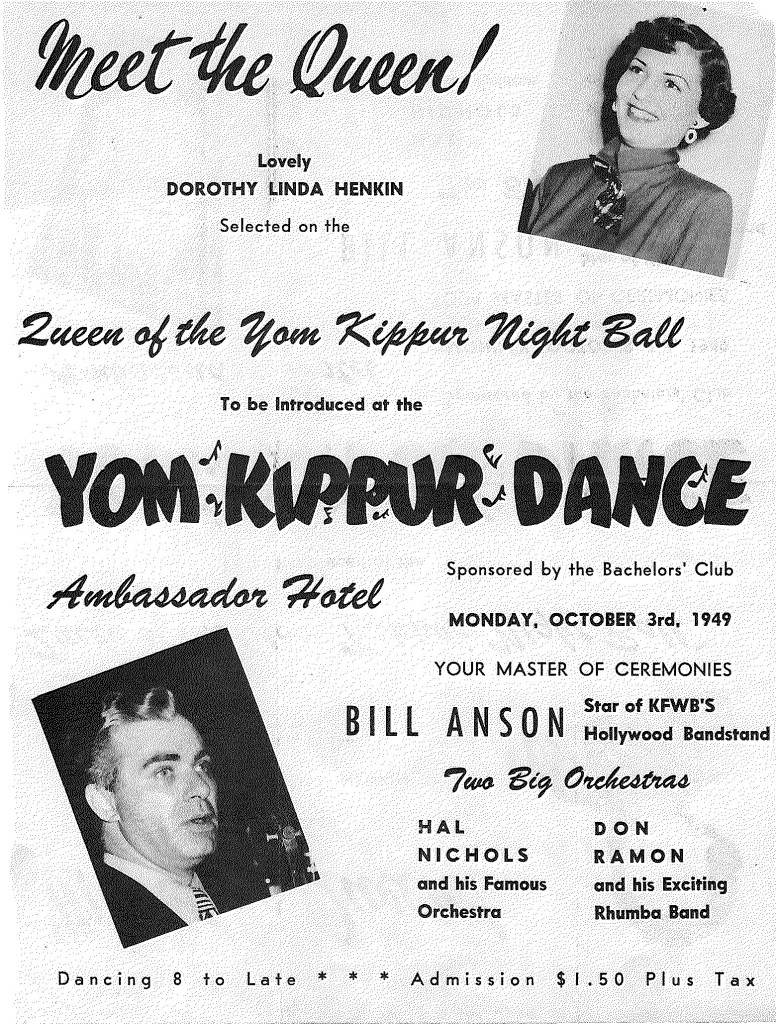The Bachelors’ Club Yom Kippur Dance, Los Angeles, 1939-1952
In 1888, a group of “free thinkers” in London hosted a Yom Kippur Ball — the first of its kind.
Held in a rented hall, the London gathering featured music, refreshments, and anti-religious lectures spanning the duration of Yom Kippur, from Kol Nidre in the Neilah service.
Despite the efforts of traditionalists to disrupt the annual event, the phenomenon soon spread to America.
A Yom Kippur Ball was held in New York in 1889, and similar gatherings took place in Philadelphia, Boston, Chicago, and other major Jewish centers. The balls attracted prominent entertainers and leaders from Jewish socialist circles.
By the time the Yom Kippur Ball reached Los Angeles in the 1930’s, it had undergone some important changes.
Rather than substituting for the solemn holiday, the dances took place in the evening during “break the fast” festivities. And, instead of political protests, they were primarily mingling sites for young Jewish singles.
The Bachelors’ Club
Benjamin Rose organized the Society Bachelors’ Fraternity in Los Angeles in 1932, which hosted Sunday evening dances at Royal Palms Hotel in the West Lake Park neighborhood.
Admission for the Depression-era dances was just 45 cents, attracting young Jewish adults from LA’s Jewish neighborhoods, including Boyle Heights, West Adams, Temple Street, and Santa Monica Boulevard near Western.
Rose changed the group’s name to The Bachelors’ Club in 1934. He advertised on matchboxes and in weekly ads in the B’nai B’rith Messenger, LA’s major Jewish newspaper at the time.
In 1939, Rose devised the first annual crowning of a “Yom Kippur Queen” at a Yom Kippur Dance.
Contestants for queen were nominated by local synagogues, youth groups and social clubs. The winner, chosen “on the basis of popularity, beauty, education and charm,” was selected by a committee headed by Rose.
Entertainment was provided by such stars as Mickey Katz, Harry James, and Woody Herman.
When attendance for Yom Kippur Dances outgrew the Royal Palms Hotel, the event was held at larger venues, such as the Ambassador Hotel.
LA’s last Yom Kippur Dance was held in 1952. The Bachelors’ Club was discontinued the following year.
Two reasons are cited for the club’s demise: The Royal Palms Hotel was sold to the Plumbers’ Union, which held meetings on Sunday nights, and Benjamin Rose became increasingly involved in real estate and construction, which left little time for the club.
When the last dance ended in June 1953, an exciting era of LA Jewish social history came to a close.
Sources
- George J. Fogelson, “Ben Rose and the Bachelors’ Club of Los Angeles,” Western States Jewish History 19/2.
- Edmon J. Rodman, “From Debutantes to Yom Kippur Queens: Early Jewish Club Life,” Jewish Journal, February 11, 2016.
- Rebecca E. Margolis, “A Tempest in Three Teapots: Yom Kippur Balls in London, New York, and Montreal,” Canadian Jewish Studies 9 (2001).
Jonathan Friedmann is curator for this Bachelors’ Club exhibit.




